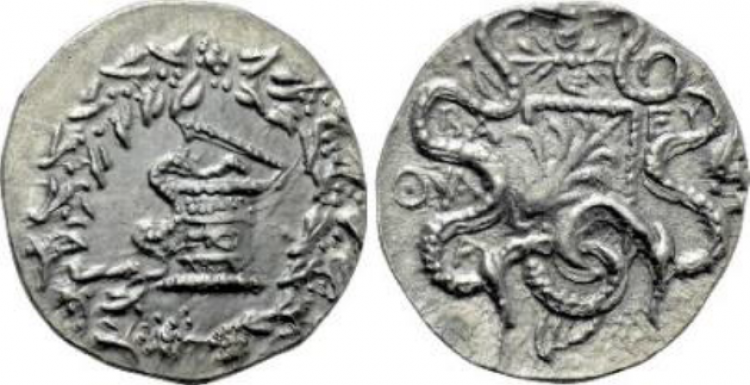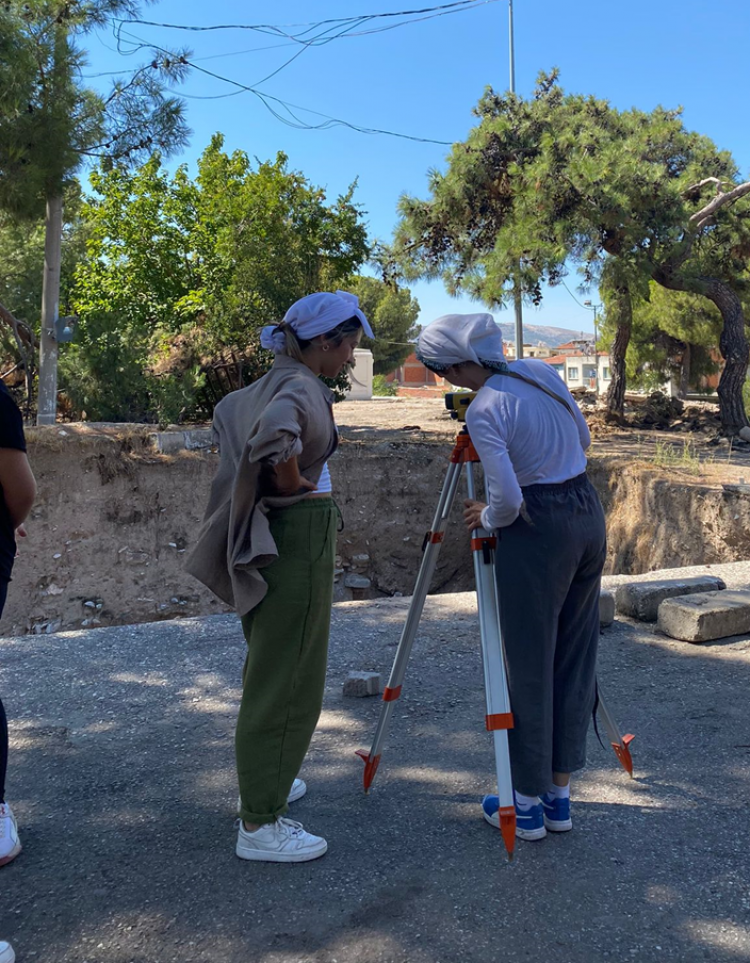Thyateira Excavation
Thyateira Excavation
The archaeological excavations at the ancient city of Thyateira and the Hospital Mound located in the Akhisar district center of Manisa Province have been carried out under the leadership of Prof. Dr. Engin Akdeniz on behalf of Adnan Menderes University and Dokuz Eylül University between 2011-2021 with the permission of the Ministry of Culture and Tourism, within the scope of the Decision of the Council of Ministers and the Presidential Decree. The new period excavations started on August 1, 2024, with the permission of the Ministry of Culture and Tourism of the Republic of Turkey, under the scientific direction of Manisa Museum Directorate and Dokuz Eylül University, Faculty of Letters, Archaeology Department, Faculty Member Dr. Derya Erol. The work has started with a team of 30 people supported by the students of Dokuz Eylül University, Department of Archaeology, Faculty Members of Dokuz Eylül University, Geology and Geophysical Engineering, Faculty Members of the Ceramics Department of the Faculty of Fine Arts. The work has started uninterruptedly and quickly with the full support of the Ministry of Culture and Tourism of the Republic of Turkey and the Akhisar Municipality.
The excavations were started in two sectors called Hastane Höyük and Tepe Cemetery.
It is believed that Thyateira was inhabited as early as the Bronze Age. The findings regarding the early phases of Thyateira will become clearer as systematic and scientific studies progress. It is stated by ancient authors that Thyateira had the names of Pelopeia and Semiramis in the Ancient Greek period. Although there is no clear information about its name in the Hellenistic period, it is also stated by ancient authors that the city was founded as a Katoikia during the Seleucid period. Preliminary studies on the architectural elements of the Hellenistic period show that although the city was founded as a katoikia, it later developed rapidly and became a large city.
Thyateira constantly changed hands between the Attalids and Seleucids between 226 and 190 BC. After the Pergamon victory at the Battle of Magnesia in 190 BC, Thyateira, together with the settlements in the whole Lydia region, came under the sovereignty of the Pergamon kingdom of Eumenes I with the Apameia peace in 188 BC. The oldest coins of the city known so far are the kistaphors minted during the reign of Eumenes II.

Thyateira Kistophor silver. Hellenistic. Obverse with snake emerging from cysta mistica. Reverse with lightning bolt at top and two snakes encircling applustre in centre.
It became one of the member cities of the Panhellenion Union founded by Hadrian in 131-132 AD. In this union in which Athens was the centre, Hadrian had developed Roman-Hellenic relations in a good way by establishing a new union named Panhellenion. After the administrative centre of Miletus and Tralleis during the Antonine period, Thyateira became the administrative centre of Asia of the Panhellenion Union. The city became one of the rich cities that became more powerful and effective in the region with the effect of increasing and developing trade during the reign of Hadrian.
One of the earliest epigraphic documents found in the city gives information about the existence of the cult of Apollo Pityanos, which was been dated to the 37th year of the Seleucid Era, i.e. 274 BC. It was been determined by Prof. Dr. H. Malay that Apollo Tyrimnaios was the god of the city during the Early Roman Empire period. Artemis Boreitene appears as an important cult following Apollo in Thyateira. There is information that this cult existed in the city since the Hellenistic period.
Thyateira is located at the crossroads of both Lydia and Mysia. It was located at the em important point of a very developed road network starting from Pergamon and reaching Sardis and further inland. Being located at the crossroads caused the city to prosper even more in trade during the Roman period. It is known that ceramic production and exports, weaving, leather and other crafts were very developed, and each craft branch established its own associations. There were associations named lanarioi for wool producers, bafeis for fabric dyers and karameis for ceramic producers.
Although there are suggestions for the location of the church in the city, no building dated to the 1st century AD that used for as a church has found. Further studies will provide findings regarding the possible location of this first church.
The development of trade enabled the city to prosper and made it an effective and very powerful city in the region. With the studies to be carried out, it is planned to reveal the architectural structures related to the rich urban texture of Thyateira.




